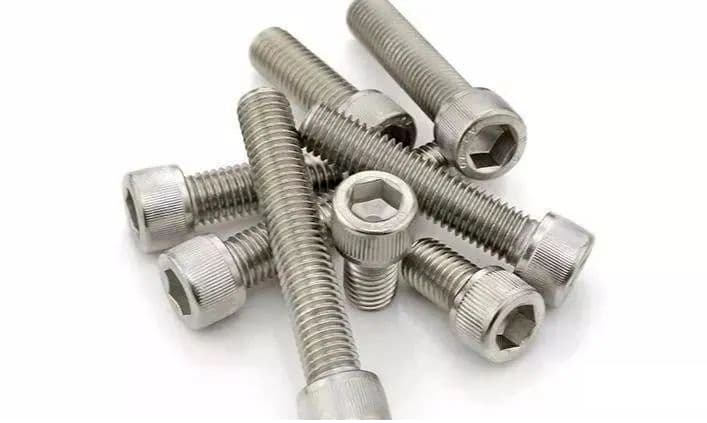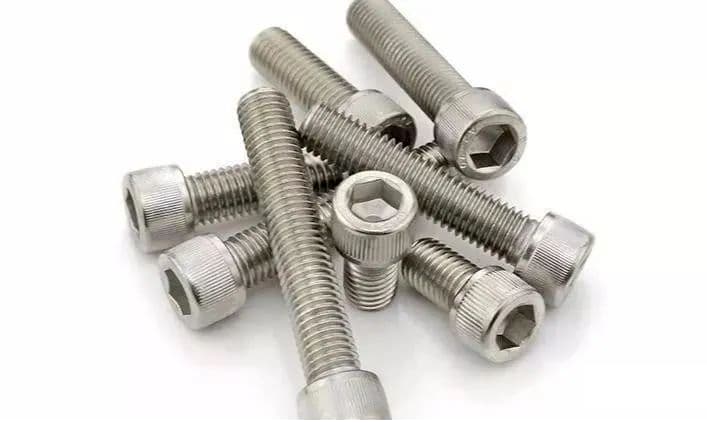What should be done if the internal hex screw slips? And why do hex screws slip? Many people are asking about the knowledge related to sliding internal hex screws. Based on my experience, I would like to share some information about sliding internal hex screws.

What should be done if the internal hex screw slips?
First, check if the nut is protruding. If it is, use a diamond file to file two flat surfaces of the nut, then use an adjustable wrench to remove it. Then find a hex head a size or two larger and hammer it into the stripped hex. Then remove it.
To remove a bare hex screw, create an opening in the end using a screwdriver. Then use a square piece of white steel slightly larger than the inner hex wrench to hammer it into the opening with a hammer.
When hammering, use an adjustable wrench to turn the screw. This method is very effective, making it possible to prepare two wrenches, one for 6mm screws and the other for 8mm screws, which can be used repeatedly.
The head of an internal hex screw is circular on the outside and hexagonal in the middle, while a hex screw has a six-sided head. The internal hex screwdriver is shaped like a “7” and can be made by cutting a hexagonal steel bar into two sections and bending it at a 90-degree angle.
When using hexagon socket head screws, it is important to use the appropriate tools properly. Do not use unsuitable tools to force the screw to remove as this may cause damage. Communicate with the customer and use appropriate force when removing the inner hex screw.
M2.5 hexagon socket head screws must be able to withstand a torque of 2 Nm or more, so it is important to use the correct amount of force and avoid using excessive force.
Locking status and solutions for standard stainless steel fasteners.
Standard stainless steel fasteners are prone to binding, and when this occurs, we must first identify the cause of the binding. What are the reasons for sticking of standard stainless steel fasteners?
We need to analyze and specifically address the cause of the blockage. Based on my experience, I have summarized some solutions to help solve the sticking problem of standard stainless steel fasteners reasonably and effectively.
- When using standard stainless steel fasteners, is a fixed tightening speed always used to secure nuts?
If you are a first-time user or are not familiar with using standard stainless steel fasteners, it is recommended that you consult your supplier about the relevant characteristics of stainless steel.
Generally, slowing down the tightening speed can significantly reduce (or even completely prevent) the chance of jamming.
Since thermal energy frequently occurs during tightening, the chance of jamming increases as thermal energy increases. When using stainless steel fasteners, the tightening speed should be slower than that of carbon steel fasteners.
- Is it recommended to lubricate screws or nuts before tightening them?
If the answer is “no”, it is recommended to use grease, molybdenum disulfide, graphite, mica or talcum powder to lubricate the internal and external threads to reduce the chance of seizing.
Coating is also an effective lubrication method. A coated nut will have an extra layer of lubricating film between the nut and bolt.
- Should screws and nuts of the same type of material be used?
If the answer is yes, it is recommended to use bolts and nuts of different grades, such as 304 paired with 316, etc. However, the type of stainless steel selected must still meet the needs for rust and corrosion resistance.
Also, when tightening flanges, jamming often occurs.
If you have followed the above points, including using washers, liner nuts (or using longer nuts like GB6170 or DIN934), tightening diagonally, and gradually tightening to the appropriate tension, but still cannot solve the problem, you can temporarily use carbon steel nuts when pre-locking the flange device and use stainless steel nuts when officially tightening to strike a balance between aesthetics, rust resistance and jamming prevention.
The safe installation method of anti-loosening washers can ensure the safety of fasteners.
Anti-loosening washers are not only a locking device to prevent loosening, but also a high-load locking device that can be used in all strong vibration environments.
If anti-loosening washers are used and installed correctly, nuts and bolts do not need to be retightened, ensuring the safety of fasteners.
So what is the safe method of installing anti-loosening washers? Let me explain:
- Installing anti-loosening washers is simple. Simply place the two inner surfaces of the inclined teeth of the washers opposite each other, between the nut and the connecting material.
- After the nut is tightened, the convex radial surface of the anti-loosening washer on the outside comes into contact with both ends, forming an engagement state, and the inclination angle of the inner surface of the inclined tooth of the washer is greater than the screw thread angle.
- When the bolt is lengthened due to mechanical vibration, the nut rotates and loosens. However, the frictional force between the outer convex radial surface of the anti-loosening washer and the inner inclined tooth surface is greater than that between the inner inclined tooth surfaces, allowing only relative movement and tension build-up between the inner surfaces. of the inclined tooth. This prevents the screw from stretching further.
- When the bolt contracts, the inclined surface of the washer tooth will cause the nut to return to its original position.
- Anti-loosening washers are only suitable for flat, relatively smooth metal surfaces.
- If the connecting material is non-metallic, a metal plate can be attached to the connecting material to use a spring washer.
- A torque wrench is not required when installing anti-loosen washers.
- Pneumatic tools can also be used to install or remove anti-loosen washers.
Reasons why flat head screws cannot be tightened and precautions to take
Flat head screws, also known as countersunk screws or flat machine screws, have a 90-degree tapered head, and the surface of the installation hole on the connecting part is also machined with a 90-degree tapered recess to ensure that the screw head and the surface of the connecting part are parallel.
They are used for places where the surface may allow slight protrusions. However, during use, why do we always encounter the phenomenon of not being able to tighten them?
Reasons why countersunk screws cannot be tightened and precautions to take
Reason 1: The thickness of the clamped part is greater than the thickness of the countersunk screw head. When the screw is tightened, there is still a part of the thread that did not enter the threaded hole. In this case, the countersunk screw can be tightened.
Reason 2: The thickness of the clamped part is less than the height of the countersunk screw head. This is common in sheet metal parts, such as the connection between the chassis hinge and door and the connection between the equipment's outer sheet metal casing and the equipment. When the thickness is small, the through hole becomes a tapered hole. When the countersunk screw is tightened, the bottom of the screw head is pressed against the top of the threaded hole, rather than the tapered surface pressing against the sheet metal part. In this case, although the screw appears tight, the sheet metal part is not actually tight.
Reason 3: The top angle of the countersunk screw head is 90°, but the top angle of a new drill is generally 118°-120°. Some untrained workers may not be aware of this difference and directly use a 120° drill to enlarge the hole. This can cause the countersunk screw to tighten along a line at the bottom of the screw head instead of forcing the tapered surface, which can cause the screw to not tighten.
Precautions:
- The taper of the countersunk hole must be 90° and this must be guaranteed. It is better to have an angle smaller than 90° than a larger one. This is a crucial method.
- If the thickness of the plate is less than the thickness of the countersunk screw head, a smaller screw can be used or the hole can be made a little smaller.

























































